During the government shutdown in January, Tom and I had some extra time to explore. One of our day trips was to Amelia Island in Florida. Amelia Island is the northernmost barrier island in Florida. As I mentioned yesterday, we liked Amelia Island so much that we returned with my parents. Both times we visited Amelia Island, the first place we went was Fort Clinch State Park.
Fort Clinch State Park takes up most of the northern end of Amelia Island. It has beautiful beaches, lots of hiking trails and two campgrounds. On both visits we saw many people out riding bikes along the roads of the park. Alligators and turtles live along the Willow Pond Nature Trail.
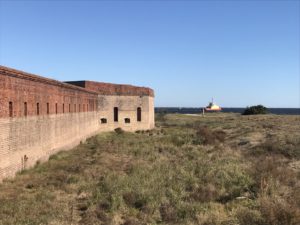 But the highlight of the park, for us, is Fort Clinch. Fort Clinch was a Third System Fortification. The First System was earthworks built as defenses starting in 1794. The Second System was brick and earthworks built by the new Army Corps of Engineers starting in 1812. Third System Fortifications were planned by the Army Corps of Engineers and built of bricks at strategic harbors. These started to be built in 1816 and continued being built into 1860.
But the highlight of the park, for us, is Fort Clinch. Fort Clinch was a Third System Fortification. The First System was earthworks built as defenses starting in 1794. The Second System was brick and earthworks built by the new Army Corps of Engineers starting in 1812. Third System Fortifications were planned by the Army Corps of Engineers and built of bricks at strategic harbors. These started to be built in 1816 and continued being built into 1860.
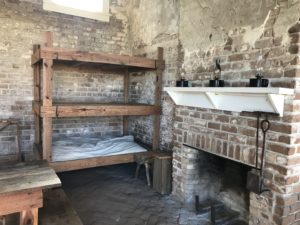 Construction on Fort Clinch started in 1847. Progress was slow and by 1860 the fort was only 2/3 completed. When the Civil War began, Florida seceded from the Union. Confederate forces quickly took control of the fort. A lack of Confederate soldiers caused General Lee to authorize the withdrawal of forces from Florida in early 1862. He felt the extensive coastline was indefensible.
Construction on Fort Clinch started in 1847. Progress was slow and by 1860 the fort was only 2/3 completed. When the Civil War began, Florida seceded from the Union. Confederate forces quickly took control of the fort. A lack of Confederate soldiers caused General Lee to authorize the withdrawal of forces from Florida in early 1862. He felt the extensive coastline was indefensible.
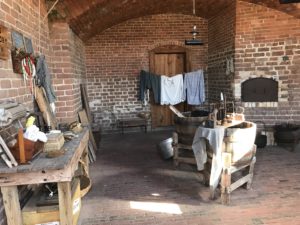 Federal warships and troops reestablished control of Fort Clinch and worked to complete the fort. After the Civil War, the fort sat empty until the beginning of the Spanish American War in 1898, when troops moved in and made repairs. The Federal government sold the fort after the Spanish American War. In 1935 the State of Florida bought the fort and surrounding property. The Civilian Conservation Corps made repairs and constructed the Visitors Center and other buildings.
Federal warships and troops reestablished control of Fort Clinch and worked to complete the fort. After the Civil War, the fort sat empty until the beginning of the Spanish American War in 1898, when troops moved in and made repairs. The Federal government sold the fort after the Spanish American War. In 1935 the State of Florida bought the fort and surrounding property. The Civilian Conservation Corps made repairs and constructed the Visitors Center and other buildings.
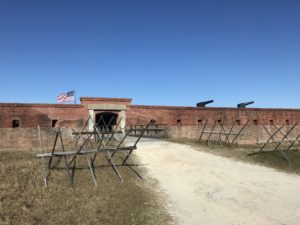 During World War II, Fort Clinch was pressed into service one last time. The Coast Guard established and maintained a surveillance system within the fort. Patrols on horseback rode along the beach. After World War II, Fort Clinch was returned to the State of Florida and became one of the first state parks.
During World War II, Fort Clinch was pressed into service one last time. The Coast Guard established and maintained a surveillance system within the fort. Patrols on horseback rode along the beach. After World War II, Fort Clinch was returned to the State of Florida and became one of the first state parks.
The most impressive thing about Fort Clinch is its size and preservation. The pentagon shaped fort with bastions in the corners is open for visitors every day of the year. You can explore the tunnels in the outer brick walls, climb the stairs in the bastions, or wander through the buildings inside the fort. Costumed rangers and volunteers interpret how soldiers lived there during the Civil War.
We looked at everything both days. On our first visit we walked around the fort on the outside as well, admiring it from all angles. On both visits we admired the beautiful brick work and the great condition of the fort.
Fort Clinch State Park is a must-see if you are in northern Florida. We enjoyed both of our visits very much and would certainly go again. Cost to get in is $6 per car to get into the park and $2.50 per person to visit Fort Clinch. Whether you want a day at the beach or to step back in history, Fort Clinch is a wonderful place to go.



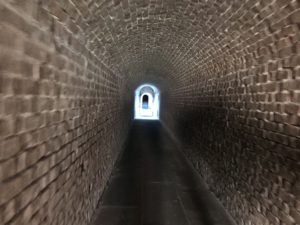

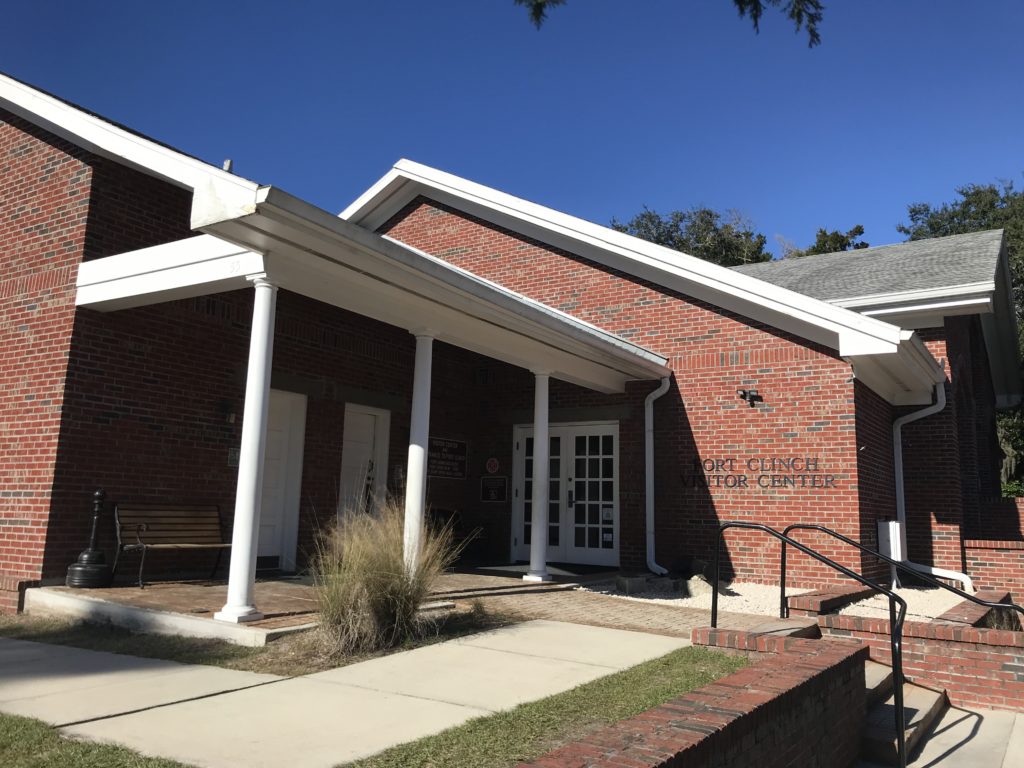
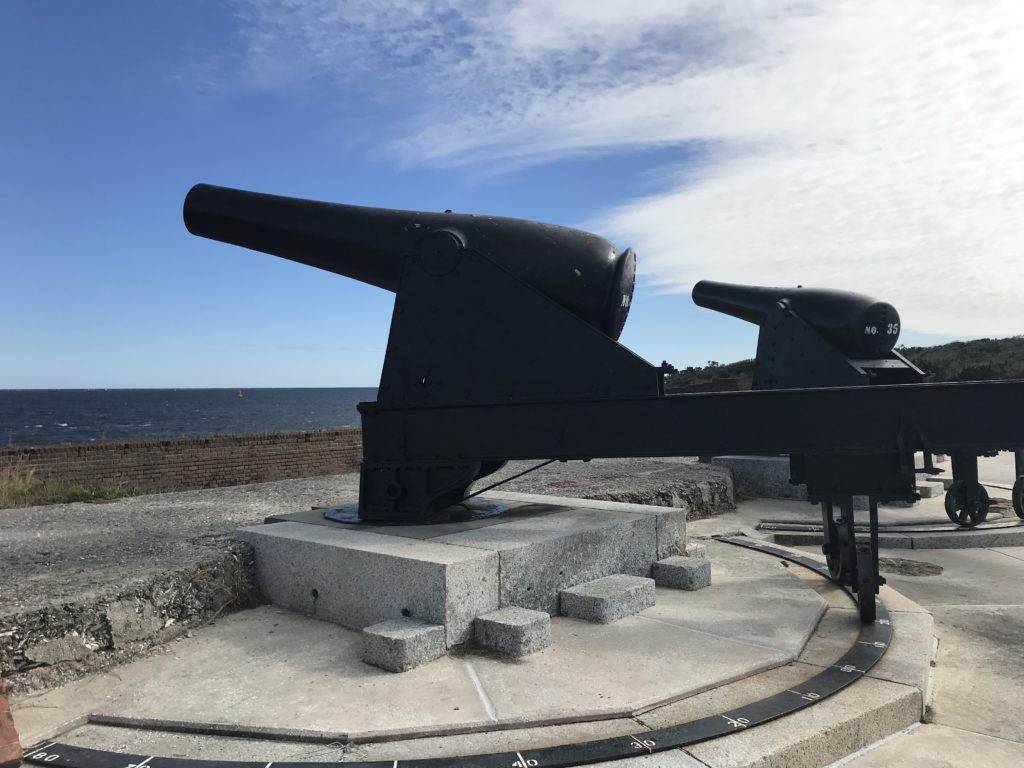

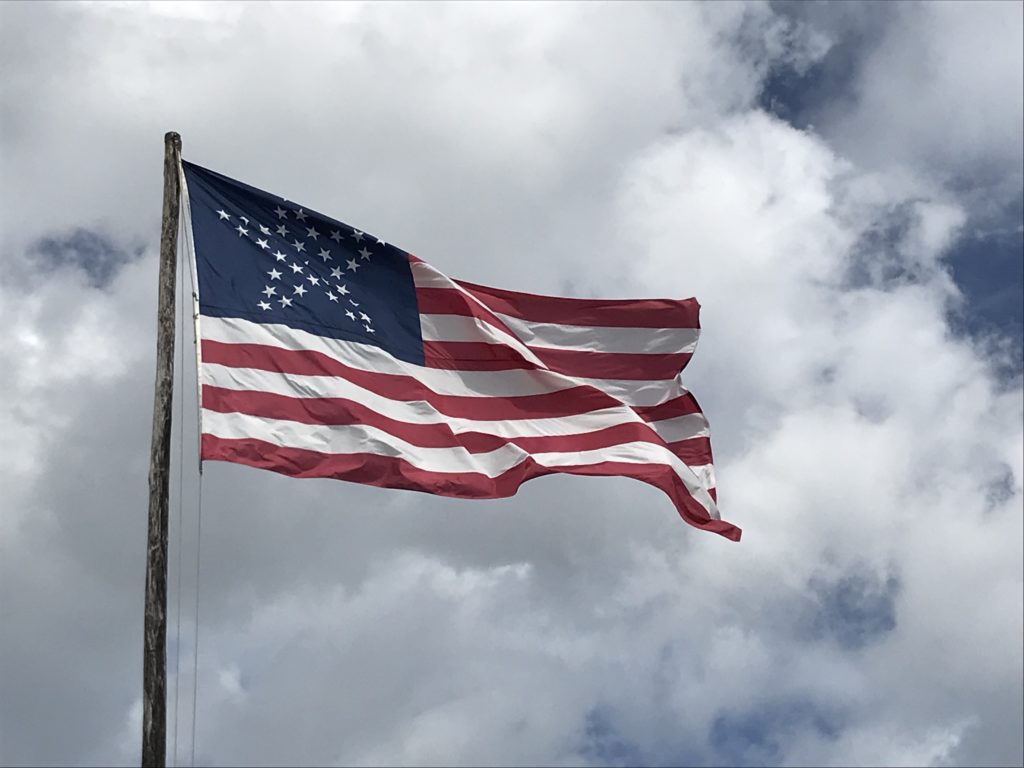
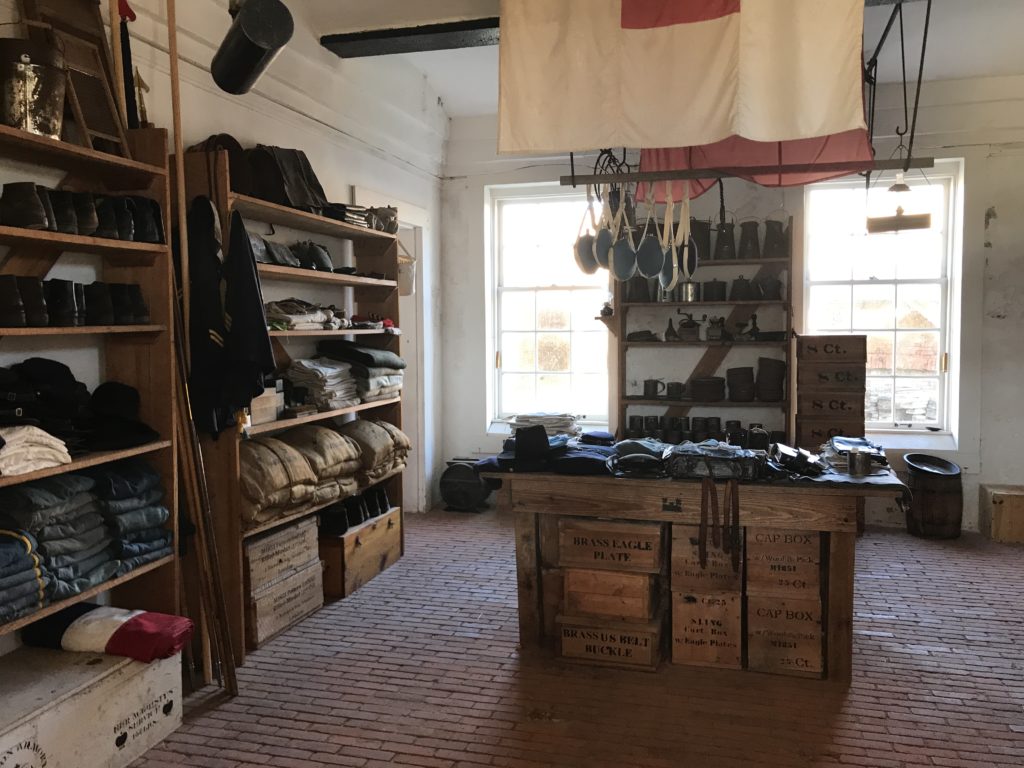
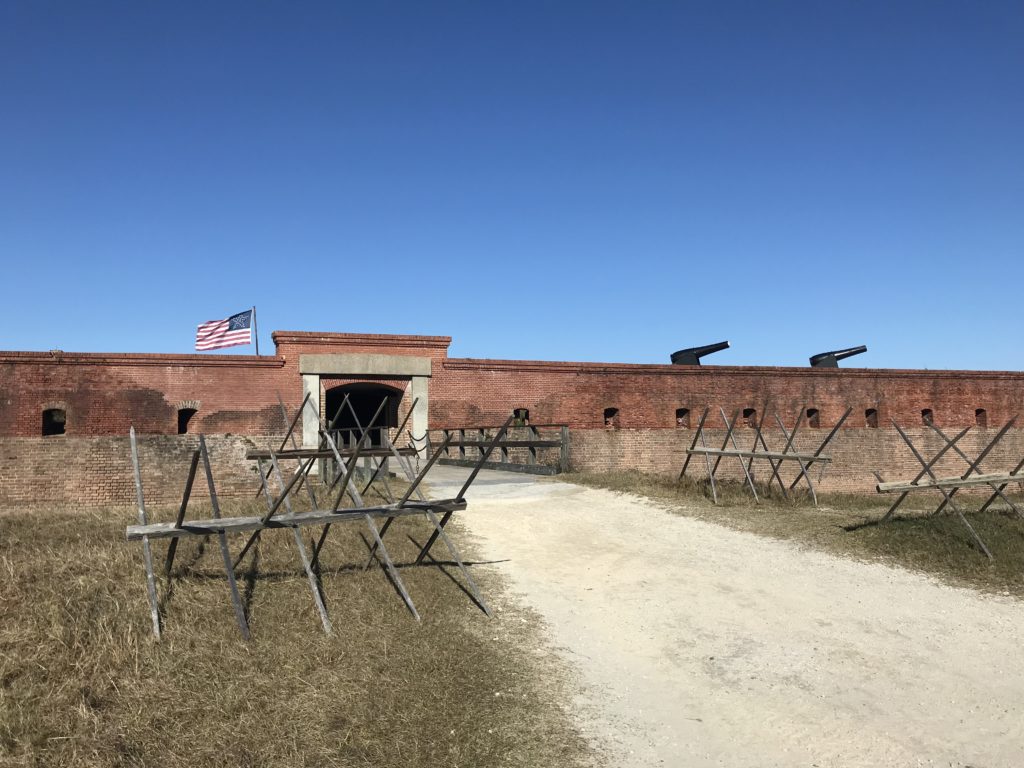
We have been here a couple of times and I recognize many of the pictures. I actually have a picture Chris took of me in one of the beds. 🙂 It is a great place to explore, isn’t it?
We were pretty impressed by Fort Clinch. Enjoyed both our visits there.